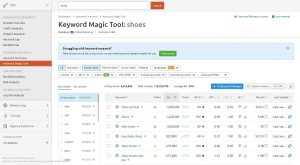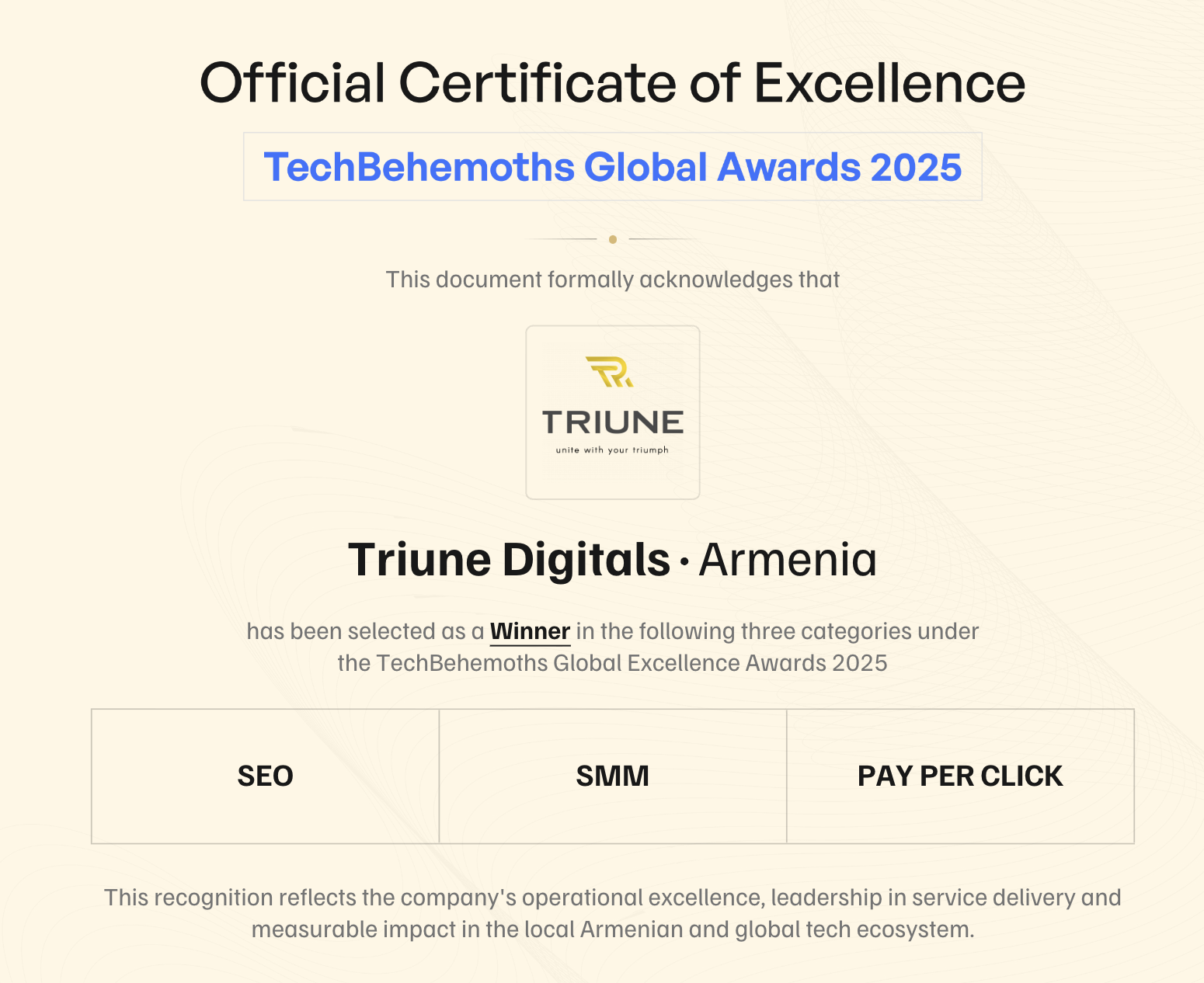If your small business needs SEO marketing, we are here to guide you to online success. By following on-page SEO best practices, you can significantly improve your website’s chances of ranking higher in search results. In this comprehensive guide, we will explore the fundamentals of SEO optimization for small businesses and provide valuable tips and examples to boost your search engine rankings.
Key Takeaways
On-page SEO is a crucial tool for enhancing the online visibility of small businesses in a competitive digital environment.
Aligning content with user intent and search engine algorithms improves user experience and search rankings.
Implementing effective on-page SEO strategies enhances user engagement contributing to sustained business growth.
What is On-Page SEO for Small Businesses?
On-page SEO for your small business involves optimizing individual pages on your website to enhance your visibility in search engine results. This entails strategically incorporating relevant keywords into your content, optimizing meta tags, creating user-friendly URLs, and ensuring mobile compatibility. By focusing on these on-page elements, you can make your website more appealing to both search engines and potential customers, ultimately driving organic traffic and increasing your online presence. SEO tips for small businesses include creating an SEO-friendly website that encompasses these optimizations.
Why Is On-Page SEO Important?
On-page SEO for small businesses is critical because it directly influences how search engines perceive your website’s relevance to user queries. Google and other search engines analyze various on-page elements to determine if a page matches a user’s search intent. When your content aligns with what users are searching for, search engines reward your site with higher rankings. Here’s why on-page SEO is essential:
Relevance: Search engines prioritize content that directly matches user intent. By focusing on on-page SEO, you ensure your content is relevant to your target audience.
User Experience: User experience in SEO is the cornerstone of effective content presentation. Google values user experience, so it’s essential to create “people-first content” that offers value and relevance to your visitors.
On-Page SEO Optimization Techniques for Your Website
Now, let’s explore SEO optimization for small business websites with ten on-page SEO techniques that can elevate your website’s performance.
1. Write Unique, Helpful Content
Start by conducting thorough keyword research to discover relevant topics and target keywords for your content. Utilize tools like Semrush’s Keyword Magic to identify potential keywords and assess their search volume and keyword difficulty. While high search volume keywords are valuable, consider targeting less competitive long-tail keywords, as they are often easier to rank for.

When creating your high-quality content for SEO, follow these best practices:
- Incorporate keywords naturally and avoid keyword stuffing.
- Ensure your content aligns with the search intent of your target keyword.
- Provide comprehensive answers to users’ queries.
- Create unique content that offers something your competitors don’t.
- Include visual content like images and videos to enhance user engagement.
2. Place Target Keywords Strategically
Once you’ve identified your target keywords, strategically place them within your content. Key areas to include keywords are:
- H1 tags (your main headline).
- The first paragraph of your content.
- Subheaders (H2s, H3s, etc.).
Strategic keyword placement helps search engines understand the topic of your page and assists users in quickly assessing if your content matches their search intent. Long-tail keywords, reflecting specific queries, can be potent allies, carving a niche within your niche. You can use tools like Semrush’s On-Page SEO Checker to analyze your content and ensure that your target keywords are appropriately placed.

3. Write Keyword-Rich Title Tags
Title tags are essential HTML elements that define a page’s title and appear in search engine results, social media posts, and browser tabs. Crafting compelling title tags is crucial, as they can influence users’ decisions to click on your page. Follow these SEO tips for small businesses for writing effective title tags:
- Keep them concise (around 50-60 characters) to avoid truncation.
- Include your target keyword to clarify your page’s topic.
- Ensure each title tag is unique to differentiate your pages.
- Use active voice and add a compelling call to action (CTA) when appropriate.

Regularly check for duplicate title tags using tools like Semrush’s Site Audit to maintain the clarity and relevance of your page titles.

4. Write Click-Worthy Meta Descriptions
Meta descriptions are HTML elements that provide a brief summary of your webpage’s content and appear below the title tag in search results. While meta descriptions don’t directly impact rankings, they can significantly affect your click-through rate (CTR). To create click-worthy meta descriptions, follow these guidelines:
- Keep them concise, especially for mobile users (around 120 characters).
- Include your target keyword to match users’ search queries.
- Craft engaging descriptions that entice users to click.
- Use active voice and add a CTA, if applicable.
Regularly review your meta descriptions and ensure they align with users’ search intent and the content on your page. Avoid letting Google generate descriptions for you by providing your own descriptive meta tags.
5. Use Headings and Subheadings to Structure Your Page
Headings, including H1, H2, H3, and so on, play a vital role in structuring your content for both users and search engines. They enable users to skim your page easily and allow search engines to understand the hierarchy of your content. Here’s how to optimize your headings:
- Use H1 as your main title or headline.
- Include H2 subheaders to cover important subtopics.
- Utilize H3, H4, and so forth for further content organization.
- Incorporate keywords and keyword variations into headings to provide context to search engines.
Structured content with well-defined headings not only improves readability but also helps Google assess the relevance of your page to users’ queries.

6. Optimize URLs
Google recommends using clean and descriptive URLs that convey the content’s topic. Ensure your URLs include relevant words that help users and search engines understand what the page is about. Avoid using random numbers, dates, or full sentences in your URLs. Including your target keyword in the URL can further reinforce the topic’s relevance.
Here’s an example of an optimized URL transformation:
Unfriendly URL: www.example.com/p=12345
Optimized URL: www.example.com/on-page-seo-best-practices
Clear and concise URLs improve user experience and provide additional context to search engines, ultimately contributing to higher rankings.
7. Add Internal Links
Internal links are hyperlinks that connect different pages within your website. They serve several essential purposes in on-page SEO:
- Help search engines understand your site’s structure and page relationships.
- Facilitate the discovery of new pages by Google crawlers.
- Signal the importance and relevance of linked-to pages.
- Enhance user navigation, keeping visitors on your site longer.
Strategically adding internal links from one page to another informs Google about the relationships between your pages, aiding in search engine ranking.
8. Add External Links
External links, also known as outbound links, point from your website to other authoritative and trustworthy websites. While the impact of external links on rankings is debated, Google encourages linking to authoritative sources as it enhances user experience and provides valuable information to your audience.
Ensure your content includes links to reputable sources, citing references, and supporting your claims. External links contribute to the overall credibility and trustworthiness of your website.

9. Include and Optimize Images
Incorporating images into your content not only enhances its visual appeal but also expands your reach to Google Images, which accounts for a significant portion of searches. To optimize images for on-page SEO, follow these steps:
- Write descriptive alt text for images, keeping it concise (around 125 characters) and including your target keyword when relevant.
- Use descriptive file names for images to convey their content.
- Compress images to improve page load times and user experience.
- Consider lazy loading to defer image loading until users scroll to them.
Optimized images with descriptive alt text and proper file names increase your chances of ranking in Google Images, attracting more traffic to your site.
10. Mobile-Friendly Design
Implementing mobile SEO for small businesses is essential in today’s digital marketplace, as it ensures that your website not only ranks well on mobile devices but also provides a seamless and engaging user experience across various screen sizes, ultimately contributing to your digital success. A mobile-friendly approach goes beyond resizing; it prioritizes touch-friendly interactions, swift loading times, and readability. Mobile-friendly design is an imperative strategy for modern digital success.
11. Social Sharing
When your content gets shared on social media, it draws attention, traffic, and even backlinks to your site. We can help you create a social sharing strategy that amplifies your content’s impact. The amplification of content through social sharing broadens its reach, engaging a wider audience and potentially leading to more sharing, ultimately enhancing on-page SEO for small businesses.
Incorporating effective Social Media Marketing strategies can magnify content sharing, reinforcing its impact on on-page SEO for small businesses, while expanding reach and engagement across platforms.
12. Analytics and Monitoring
Use tools like Google Analytics for small business SEO and Google Search Console to track the performance of your content, including organic traffic, user behavior, and keyword rankings.
Advanced On-Page SEO Tactics
Beyond the basics, here are a few more advanced tactics for your SEO strategies for small businesses:
1. Optimize for Page Speed
Page speed is a confirmed ranking factor, and optimizing your site for speed is essential. Google’s PageSpeed Insights tool provides performance scores for both mobile and desktop, along with actionable suggestions for improvement. Prioritize addressing Core Web Vitals, such as Largest Contentful Paint (LCP), First Input Delay (FID), and Cumulative Layout Shift (CLS), to enhance page experience.
2. Target Featured Snippets
Featured snippets appear at the top of search results, offering valuable real estate. Identify keywords with featured snippets and craft content that provides concise, user-friendly answers to target these snippets. Structured content and effective use of schema markup can increase your chances of securing featured snippet positions.
3. Add Schema Markup
Schema markup, often referred to as structured data, serves as the code that search engines utilize to interpret and comprehend the content presented on your web pages. Schema markup helps search engines better understand your content, leading to rich snippets in search results. Implement schema markup for various content types, such as reviews, products, events, and people, to enhance your visibility and click-through rates. Regularly validate your schema markup to ensure correct implementation.

The Difference Between On-Page SEO and Off-Page SEO
If you want to dive into the specifics of on-page SEO, it’s essential to distinguish it from off-page SEO. On-page SEO optimizes elements within your webpage, such as content, keywords, and structure, to enhance its search engine ranking. On the other hand, off-page SEO deals with external factors like backlinks, social media, and public relations, which also play a vital role in your website’s overall SEO strategy. While both are essential, on-page SEO offers you more control and is an excellent starting point when building your SEO strategy.

Final Thoughts
On-page SEO for small businesses involves optimizing various elements on your website to improve search engine rankings and user experience. The implementation of on-page SEO strategies holds significant potential for your small business, shaping your website’s online presence and influencing the visibility and engagement in the digital marketplace.
When you’re thinking about hiring an SEO expert agency, consider us as your partner for online success. What makes us stand out is our strong dedication to helping your business grow. We know that every business is different, so we customize our strategies to fit your unique needs and goals.
Consider our professional SEO services to ensure effective website content optimization, aligning with user intent and search engine algorithms, leading to improved visibility and organic search traffic
Contact us to evaluate an effective on-page SEO strategy for your small business!
FAQs
How can I get started with on-page SEO?
Start by conducting keyword research to identify relevant keywords for your industry. Optimize your meta titles, descriptions, headers, and content with these keywords. Focus on delivering valuable content that addresses user needs, and consider mobile-friendliness and page speed.
What are the long-term benefits of effective on-page SEO for small businesses?
Effective on-page SEO can lead to improved search engine rankings, increased organic search traffic, enhanced user engagement, and ultimately, higher conversion rates. It helps your business establish a strong online presence and stay competitive in the digital world.
What tools should I use to monitor my website’s on-page SEO success?
Tools like Google Analytics and Google Search Console provide insights into traffic, user behavior, keyword rankings, and more, helping small businesses track their on-page SEO performance.





